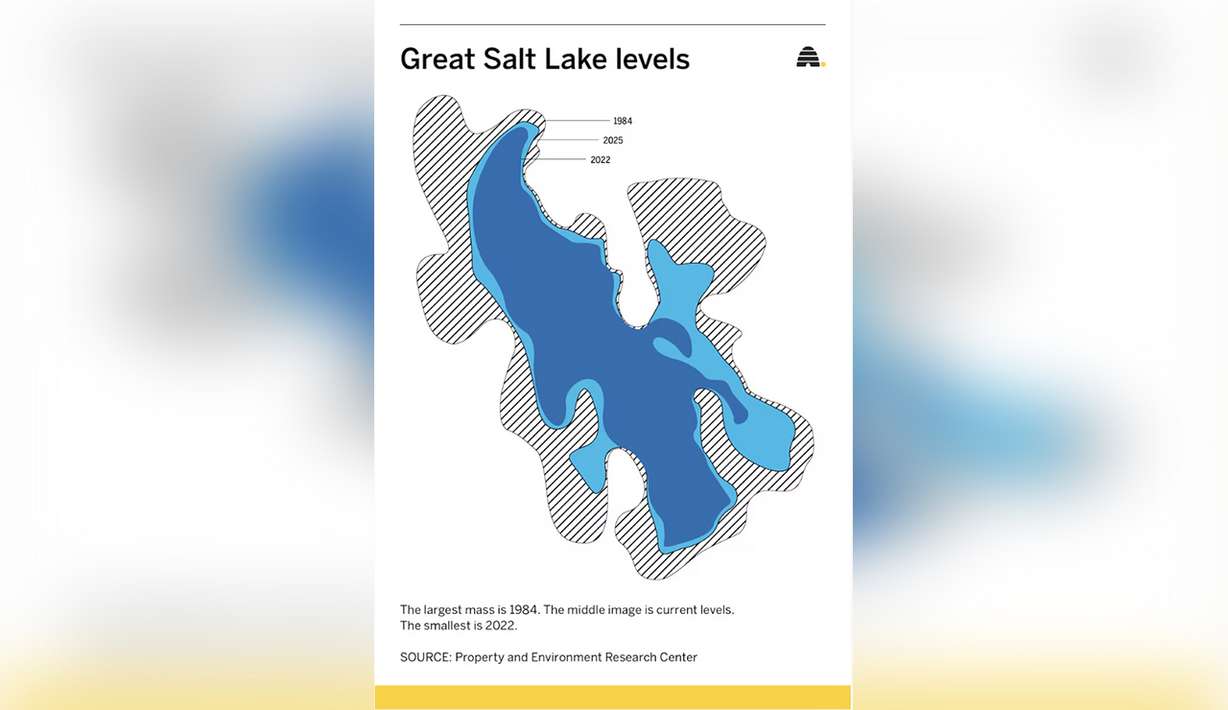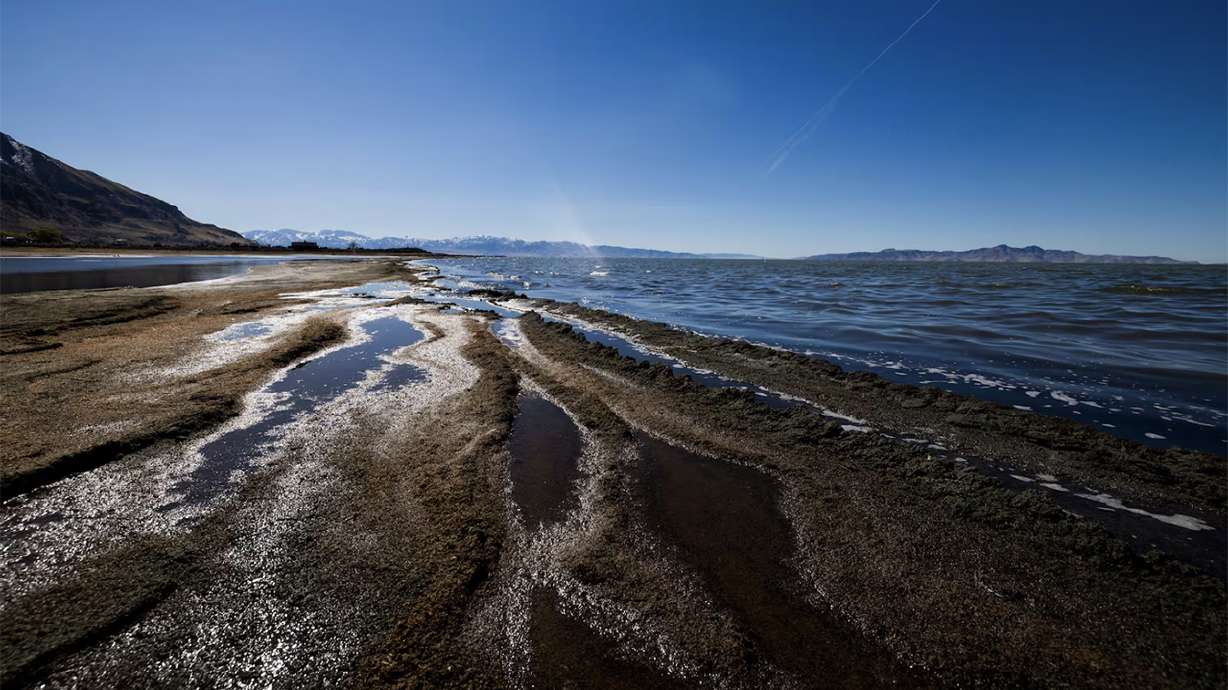Estimated read time: 5-6 minutes
- Utah aims to save the Great Salt Lake; a challenging, unprecedented task.
- A report highlights innovative water policies and collaboration among lawmakers and advocates.
- Farmers are seen as key to water conservation, with incentives for water savings.
SALT LAKE CITY — Saving the Great Salt Lake is Utah's chance at a "moonshot" — accomplishing something that has never been done before.
A report released Thursday by the Property and Environment Research Center, or PERC, praises the collaboration among Utah lawmakers, policymakers and advocates for steps being taken to embrace the seemingly impossible task of saving the largest saline lake in the Western Hemisphere.
"It does take time. It isn't easy, but that's why this report is themed after the moonshot; this idea that we don't do things just because they're easy. We don't do things just because they're quick or simple. You know, we do things because they're hard," said Katherine Wright, author of the report. "And we shouldn't be scared by these difficult or hard problems. We should instead embrace them and realize this is what it's going to take to help save the Great Salt Lake."
Wright's report was released to coincide with Utah State University's Spring Runoff Conference, a two-day event this week dedicated to a variety of water topics such as the snowpack, predictions about upcoming stream flows and more.
In the case of the Great Salt Lake, Wright noted that the state has methodically gone about focusing its attention on its condition and how to save it.

"No country has been able to save a saline lake," the report said. "Utah has done many seemingly impossible things when it comes to water policy. The state has pioneered some of the most innovative water leasing policies in the West. Now, the state has a chance to once again do something that no other state has done before."
Owens Lake in California was drained dry and is being rehabilitated, while California's Mono Lake is the subject of restoration efforts as well. But Mono Lake is just 70 square miles, in comparison to the average of 1,700 square miles that the Great Salt Lake occupies.
The lake's flailing condition
The lake has lost 60% of its surface water, and it dropped to a historic low in 2022. That was a harsh reality, spurring lawmakers into action and leading to some inevitable finger-pointing about who is to blame.
Mineral extraction companies were subject to new scrutiny, but alfalfa farmers took the brunt of the criticism over the lake's depletion of water.
In the Great Salt Lake Basin, there are 418,000 acres of irrigated farmland and Utah has grown more alfalfa each year since 1950, the report said. Over 70% of water diversions in Utah are used for agriculture, the report points out.
But Wright said farming provides the greatest opportunity to save water and alfalfa producers should be viewed as a source of hope, not blame.
That's why this report is themed after the moonshot; this idea that we don't do things just because they're easy. We don't do things just because they're quick or simple. You know, we do things because they're hard.
–Katherine Wright, study author
"I think that farmers have a legal right to use their water and to make decisions about how they want to use that water, and oftentimes farmers are responding to crop prices, to local dynamics, to supply chains. So it's a very complicated issue, and I don't think that it's wrong for people to grow alfalfa," she said. "I think they're reacting to the incentives in front of them, and that's why I think that we need to structure contracts or voluntary leases over water savings instead of a specific practice."
She went on to emphasize people should not be myopic in their opinion about consumptive water use impacting the Great Salt Lake.
"I don't know how to farm. I'm not a farmer, so I shouldn't go up to them and say, 'You need to switch from alfalfa to wheat, right?' Because I don't know anything about their farm. I don't know anything about their irrigation practices. ... Instead, what I should do is say we will pay you for any water savings that you can generate, and we'll let you figure out how to achieve that if you're interested."
Solutions for the Great Salt Lake
Wright said Utah has adopted a multipronged approach to deliver first aid to the lake, changing laws, pumping more water its way and investing millions of dollars dedicated to lake restoration efforts.
Her report outlines this timeline about some of the legislative changes to Utah's laws on water policy:
- 2019 — Expanding the definition of beneficial use to include instream flows for environmental restoration.
- 2020 — Establishing a framework for water banking and split season leasing to ensure water right holders are not subject to forfeiture and allowing farmers to lease water for part of the growing season to encourage conservation.
- 2022 — "Saved water." This clarified that water saved through improved irrigation practices is protected from being classified as waste. This reform could encourage farmers to adopt water-use efficiency measures, knowing that their conserved water can be leased for environmental purposes without giving up any rights to the water.
- 2024 — Additional legislation-funded advancements in water monitoring, metering and telemetry. The aim is to increase certainty when water is transferred over long distances by spurring investment in the infrastructure to monitor and track such transfers.
Lawmakers also committed over $200 million to agricultural optimization projects, encouraging farmers to adopt advanced irrigation technologies, such as drip systems that could reduce water use. They created the Great Salt Lake Watershed Enhancement Trust, funded with $40 million to offer farmers compensation for leasing water in ways that benefit the lake. In 2023, the state established a new Office of the Great Salt Lake Water Commissioner to develop a strategic plan to restore the lake and coordinate efforts across agencies to support lake restoration.










